Shovel Knight: Shovel of Hope is the original campaign in Shovel Knight: Treasure Trove, the Kickstarter success story whose protagonist has become the face of indie retro platformers. It tells the story of Shovel Knight, a shovel-wielding hero who was once the partner of Shield Knight. Together they roamed the wilderness amassing treasure and defeating evildoers. Their adventures brought them to the Tower of Fate where they discovered an amulet. When Shield Knight went to touch the object, Shovel Knight suddenly found himself lying outside, the tower sealed to entry, and his companion nowhere to be found. Heartbroken, Shovel Knight retired to a farm where he turned his shovel blade to farmwork.
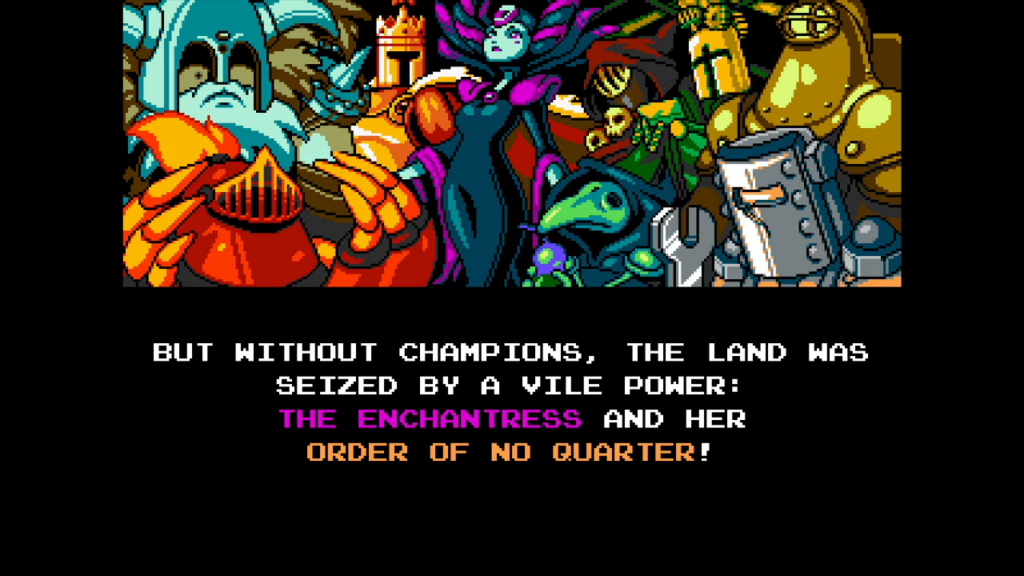
Years later, the villains of the world step in to fill the void left by Shovel Knight and Shield Knight, forming the eclectic Order of No Quarter. Led by an evil Enchantress who operates out of the now-unsealed Tower of Fate, the Knights divide the land into personal fiefdoms whose inhabitants they terrorize. Recognizing his chance to find out what happened to his beloved Shield Knight, Shovel Knight sets out for the Tower of Fate, knowing that to reach it he will have to defeat the Order of No Quarter and the Enchantress that stand in his way.
Shovel Knight is a traditional and uncomplicated platforming player character. His full suit of armor and huge horned helmet do little to hinder his movement and jumping. They receive no embellishments; moving and jumping is all Shovel Knight can do unaided by his tools. Since these abilities form the basis of any platformer, this isn’t a bad thing.
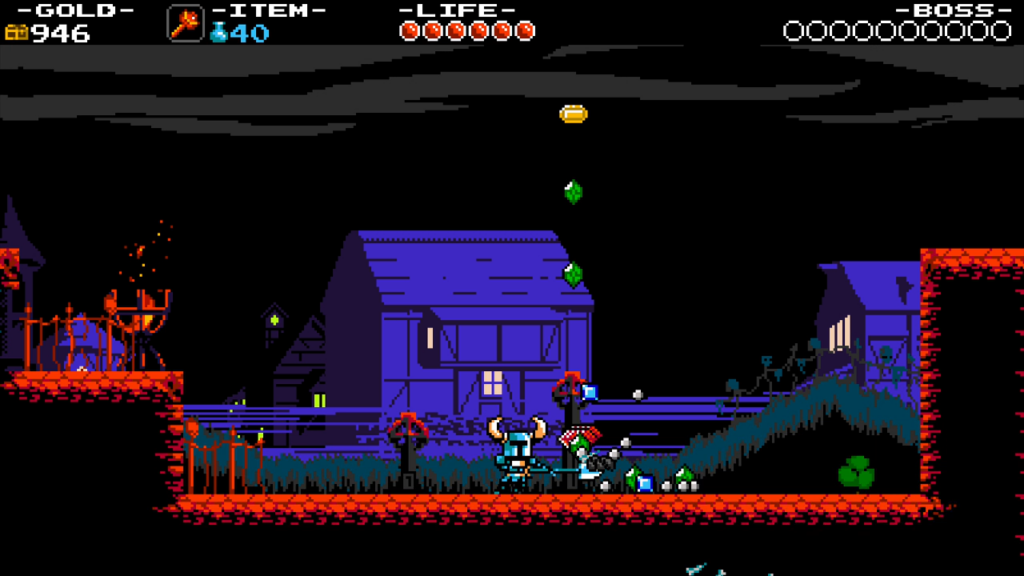
The functions provided by Shovel Knight’s shovel blade are where he establishes his unique platforming identity. The shovel blade appears to be an ordinary shovel and is even used regularly towards that practical purpose. Shovel Knight can swing it to smash destructible walls, clear away dirt squares blocking his path, and dig up piles of treasure. He also uses the shovel blade to defend himself; its cutting edge has been sharpened to a razor point that turns it into an effective short-ranged weapon not unlike a sword.
The shovel blade’s more unusual function is its nonsensical buoyancy. When airborne, Shovel Knight can jump onto his weapon and thrust it downward. If this strikes an enemy or object, it sends him flying skyward again in defiance of gravity and common sense. This can be repeated many times, carrying Shovel Knight across precarious gaps and over towering cliffs. Some of Shovel of Hope’s best platforming sequences allow for creative and extended use of this unexpected pogo-jumping ability.
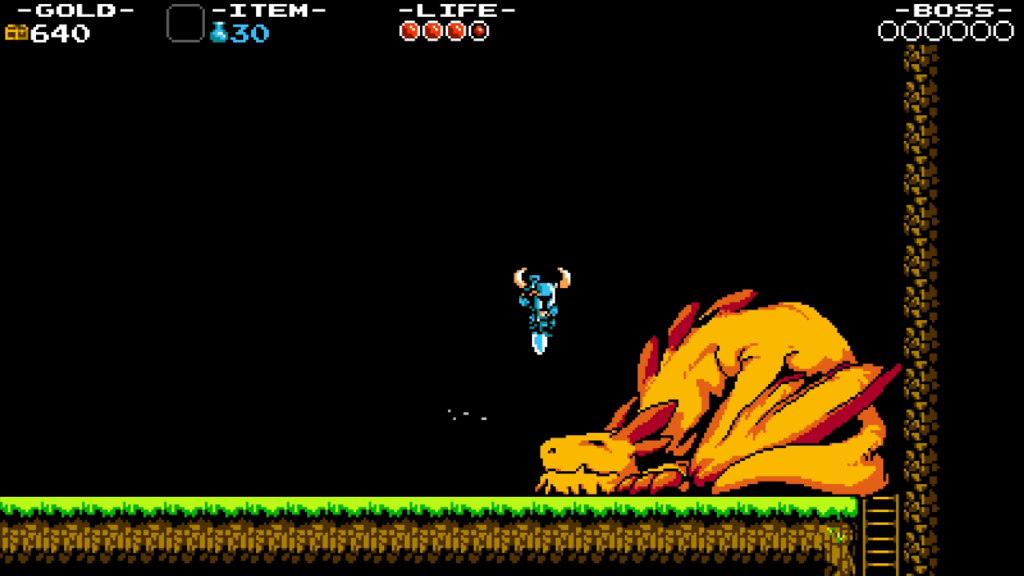
The Shovel of Hope campaign features an admirably diverse set of twelve unique stages where Shovel Knight’s distinct platforming mechanics are exploited. They begin with a typically medieval appearance, sending the hero through the gilded castle of Pridemoor Keep and a haunted graveyard called The Lich Yard. They grow inexplicably over time. Shovel Knight ventures into the Explodatorium, a mad scientist’s lab filled with towering beakers, the Iron Whale, a steampunk submarine and its nearby undersea regions, and the Clockwork Tower, a fortress filled with spinning gears and mechanisms in psychedelic colors. Each level feels unusual and distinct but does not feel out of place in Shovel Knight’s ill-defined world.
To keep the platforming fresh, every level hosts unique objects and set pieces that change up how Shovel Knight navigates familiar platforming obstacles. In Pridemoor Keep, the path is often obscured by tapestries that festoon the battlements, and chandeliers dangling over bottomless pits can hold Shovel Knight’s weight for only a moment before collapsing. The Explodatorium features long hallways filled with barrels of bubbling viscous ooze that regularly blow their tops, carrying anything atop them high into the air—potentially up to high platforms or into deadly spike traps. The submersible Iron Whale is filled with water which causes Shovel Knight’s jumps to carry him much further than normal. Holes in its hull are often invaded by grasping kraken tentacles which he must bounce across using his shovel blade. In every stage Shovel Knight enters, he encounters something new to challenge his platforming skills.
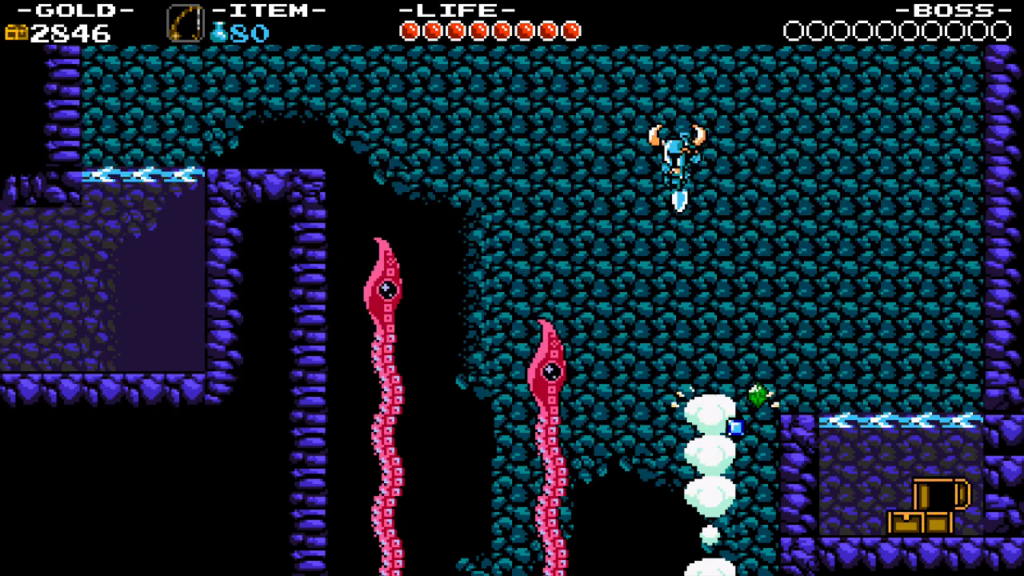
Stages have obvious and linear paths that lead to their encounters with one of the Order of No Quarter. This path frequently breaks off through hidden walls that must be spotted with a discerning eye or over high passages that require all of Shovel Knight’s platforming skill to reach. Exploring these brief, optional detours pits the hero against some of his greatest platforming challenges that culminate in valuable rewards. Most rewards are scrolls which may be traded to a bard, adding new music to his sound test menu. Each level also contains a single, more impactful hidden item called a Relic.
Relics provide Shovel Knight with an additional layer of utility. Some, like the Flare Wand and Throwing Anchor, are rudimentary damage tools that send a projectile in varying arcs across the screen. Others expand Shovel Knight’s movement abilities. The Phase Locket lets him briefly walk on deadly spikes and through enemy bodies. The Dust Knuckles let him punch through long rows of dirt blocks, even when suspended in midair. The Propeller Dagger pulls him to the left or right, adding more distance to the end of his basic jump.
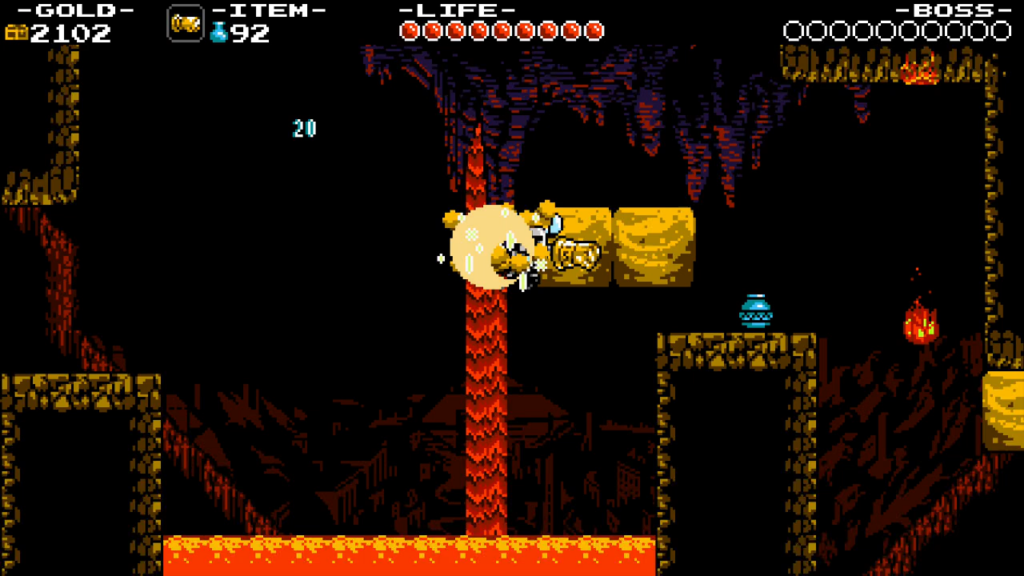
It’s possible to never add a Relic to Shovel Knight’s inventory or for his magic pool which powers them to be emptied. The campaign is built with this limitation in mind. There are no points along the core path which require a Relic and few along the optional ones. It’s easy to forget they exist outside the three optional challenge stages which require Shovel Knight to use one. Other Relics are gathered for completion, used in a single screen that teaches their use, and are never needed again.
Despite their dubious usefulness, Relics do add some customization to how Shovel Knight plays. Individual players will favor different Relics, creating minor but notable variations in how they approach each stage’s platforming challenges. I end up devoting most of Shovel Knight’s magic pool to the Flare Wand, adding a cheap and practical ranged attack to augment the shovel blade’s short reach. Another player might find the Propeller Dagger’s extra airtime or the safety afforded by the Phase Locket more appealing. Relics may be swapped at any time, so there’s no need to be proprietary about their use. I only need to remember they exist and equip them. The trouble is, most of the time I forget because Shovel of Hope does not trouble itself with reminding me.
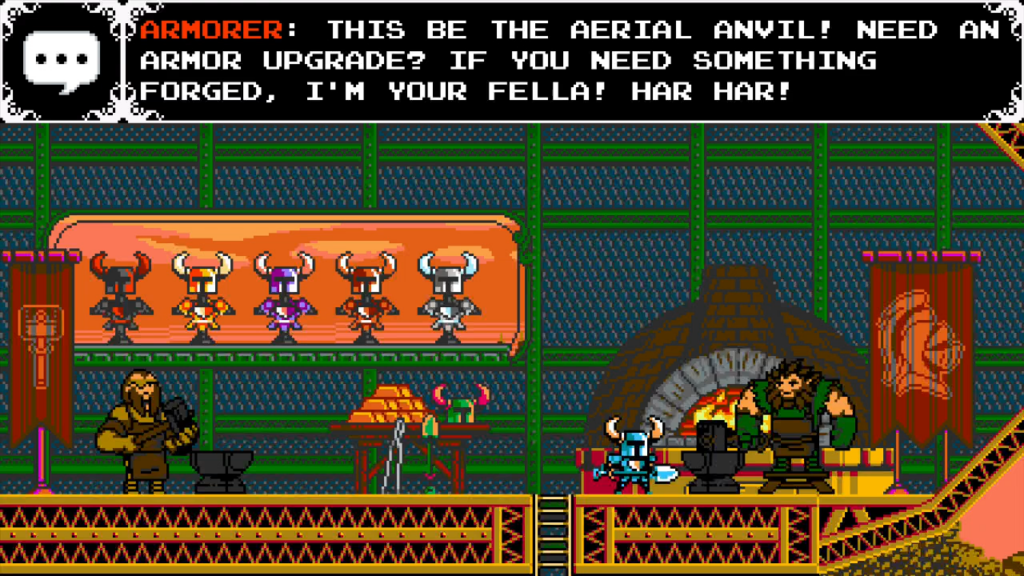
Shovel Knight may be further customized with more impactful permanent upgrades. While exploring each stage, he collects gems from enemies, scrap piles, chests, and hidden areas. Any money still in his pockets when he reaches a level’s conclusion may be carried to two friendly hubs, an unnamed Village and the Armor Outpost, to be spent on upgrades. The Gastronomer and Magicist can improve Shovel Knight’s health and magic pools, the Shovel Smith adds new capabilities to his shovel blade, and the Armorer offers new suits of armor which change up the platforming mechanics.
Investing in all of these upgrades transforms Shovel of Hope from a tough and fair retro platformer to a disappointingly easy one. An unimproved Shovel Knight must take some care early on; his health pool is slight, so he can’t take much enemy damage, and his magic pool is low, so he must carefully choose when to use his Relics. A fully upgraded Shovel Knight can charge heedlessly into battle and spam his Relics almost without care.
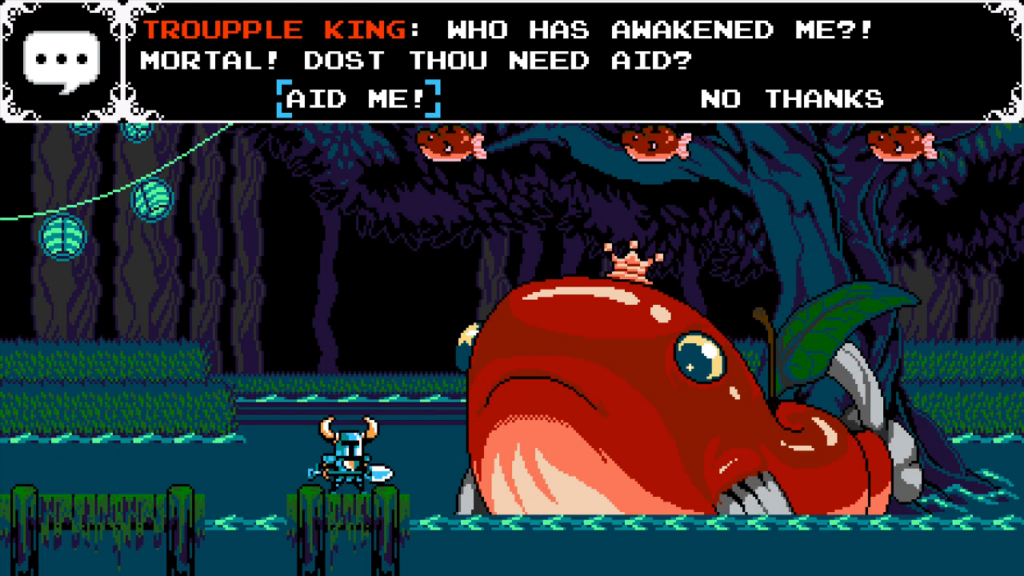
This is especially true if Shovel Knight takes advantage of boons from the Troupple King. This bizarre fruit-whale offers an Ichor of Renewal that fully restores the player character’s health meter. Shovel Knight can carry two of these Ichors at once, essentially granting him three full health meters in every stage. There is little reason to take care to avoid damage when damage is rendered inconsequential. Blessed with the Ichor of Renewal, which may be claimed immediately after the introductory level, only the instant death brought by bottomless cliffs, spike traps, and crushing platforms remain problems.
The only enemies that remain a threat against a fully powered up Shovel Knight are the Order of No Quarter. A fight against one of these colorful foes capstones each stage.
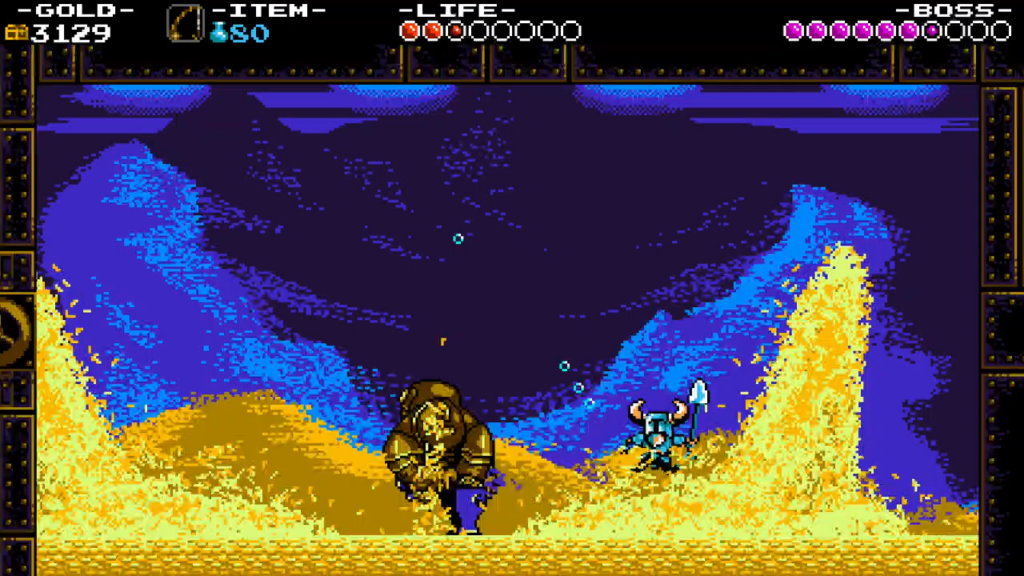
Like Shovel Knight and Shield Knight, each member of the Order is a Knight themed around a specific weapon or idea. Plague Knight hurls concoctions that explode with different fiery effects while he bounces around the battlefield with manic energy. Specter Knight wields a gigantic sickle which he swings while fading in and out of existence. Treasure Knight wears a diving suit equipped with a cannon-powered grappling hook, though the real danger in his battlefield are the shockwaves his impacts create that send waves of coins flying across the room.
The amount of imagination put into their designs is admirable, especially when compared to the protagonist. Shovel Knight’s gimmick feels like a joke compared to the Order. This is intentional. His success wielding an ordinary shovel is what makes him notable. The best heroes are underdogs.
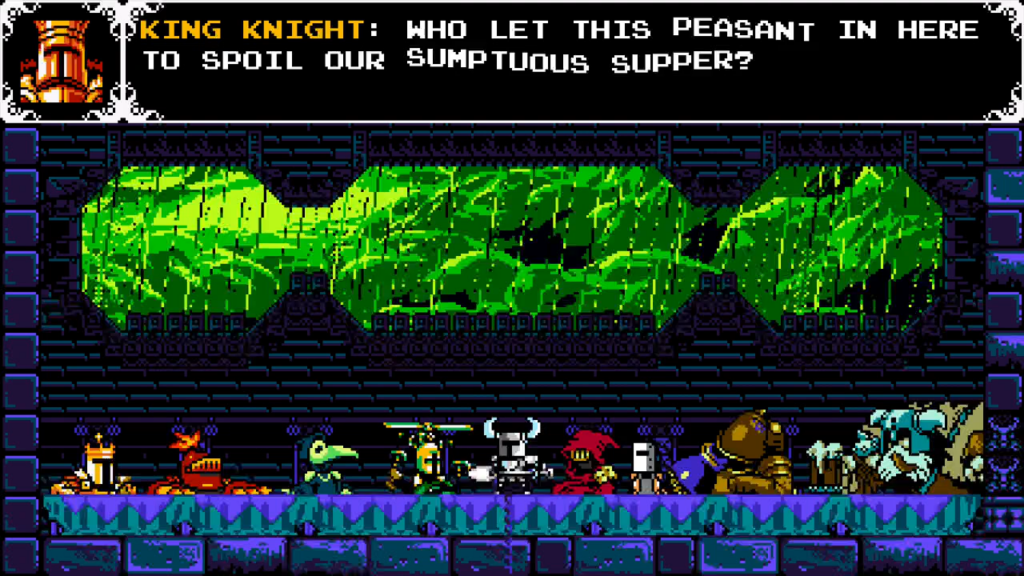
Playing from start to finish, the Shovel of Hope campaign takes me about four and a half hours to finish. I could stop at this point and be satisfied by this top-notch retro platforming experience but there are incentives to keep me engaged long after Shovel Knight confronts the Enchantress in the Tower of Fate’s heart. First is New Game Plus, a replay of the campaign with fewer checkpoints, fewer opportunities to heal, and more damaging enemies, injecting much of that challenge that a fully upgraded Shovel Knight removes from the basic campaign.
Beyond New Game Plus are additional achievements, or Feats, that challenge me to finish the campaign in new and unusual ways. Instead of using the glass orb checkpoints to mark his progress and create a safe space where he will respawn upon death, Shovel Knight may smash them and claim extra treasure from their wreckage. I earn a Feat for smashing every checkpoint in every level, essentially mandating a perfect clear of every stage. Additional Feats include beating the campaign in under 90 minutes, beating it without collecting any Relics, and beating it without spending any money. These are all typical self-imposed challenges I could undertake in any retro platformer but seeing them formalized here as Feats entices me to push beyond a one-and-done run to the credits. Shovel of Hope knows I’m capable of more and wants me to prove it.
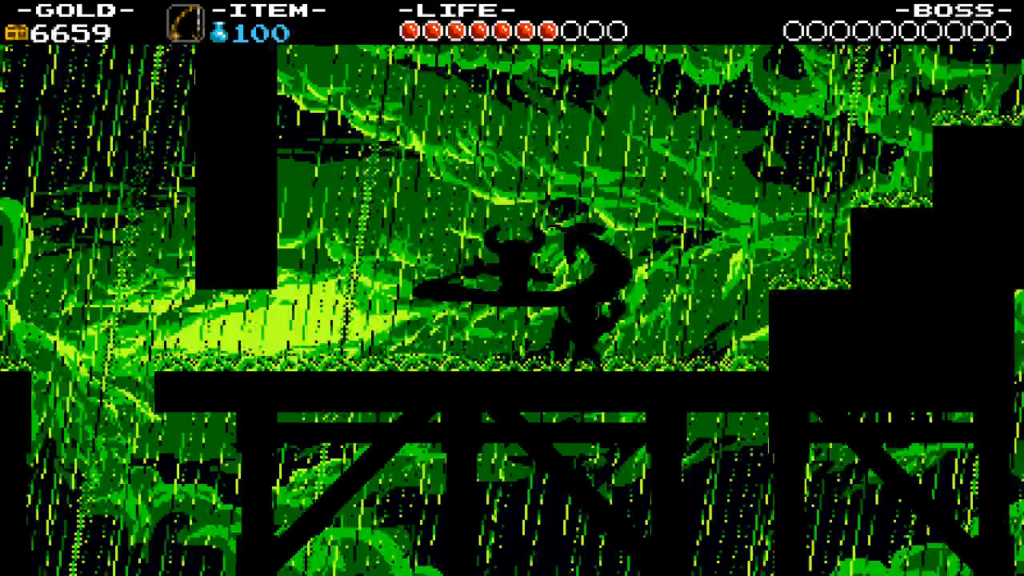
Shovel of Hope is not only a masterful recreation of the classic platformer genre, it also reverently homages the visual style of the era when platformer was synonymous with videogame. Color palettes are bold and memorable. Pridemoor Keep is garish with its green and gold castle walls backdropped by a pink sky. The Explodatorium stands out with its neon greens and pinks contrasted against pitch blackness. The Tower of Fate is cast in foreboding blacks and purples which become apocalyptic when Shovel Knight passes by windows or over battlements and sees the world outside awash in an acid green thunderstorm.
Shovel of Hope captivates me with nostalgia not only through its excellent platforming, but through its incredible visual designs, executing with seemingly little effort the perspective tricks and color combinations the NES or Sega Master System could only dream of creating.
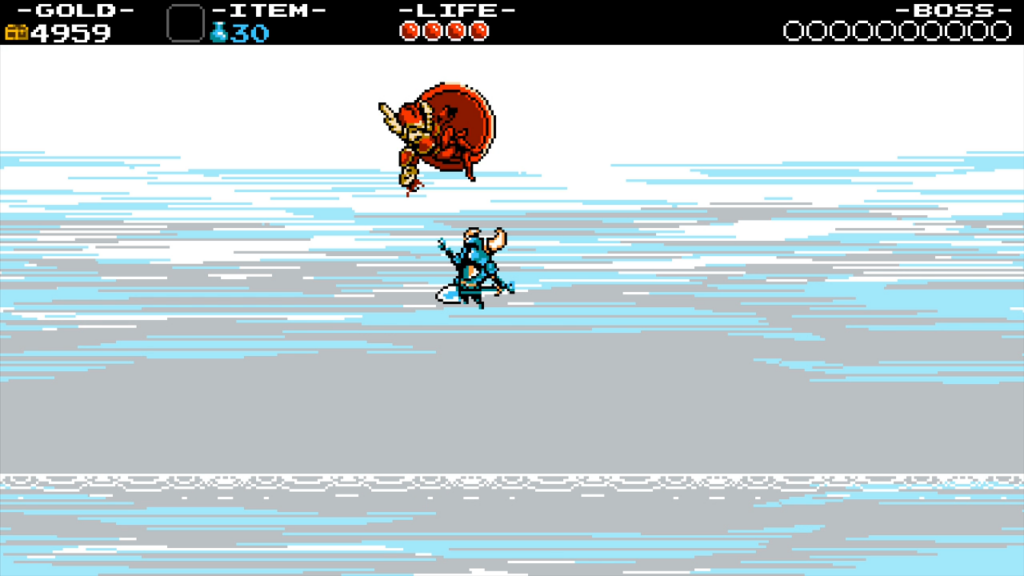
Much of what makes Shovel of Hope so successful is how it borrows ideas from many classic platformers, yet still creates something that feels new and distinct. Shovel Knight using his shovel blade as a short melee weapon and bouncing tool is reminiscent of Uncle Scrooge and his cane in Ducktales. The Order of No Quarter, a diverse group of Knights who all serve as various foils to the protagonist, recalls Mega Man’s Robot Masters. Even smaller ideas like Shovel Knight navigating straight paths on a world map between levels is lifted from Super Mario Bros. 3. Shovel of Hope borrows all of these ideas but never feels like it outright copies them. No matter how evocative it is of other videogames it never accomplishes that by sacrificing its own identity. It never feels derivative. It is a true synthesis, a combination of different elements to create something new, useful, and unique. It’s probably giving it too much credit to say it kickstarted the indie retro platformer boom. It’s also not giving it enough credit to say it’s one of the best of its kind.